News
How to Prepare Your Commercial Kitchen for the Christmas Rush

As the holiday season descends, commercial kitchens face a surge in demand, with restaurants open on Xmas expecting a flood of festive diners. To keep up with the pace, your kitchen equipment must be ready to perform at its peak. Downtime during this critical period can lead to lost revenue and unhappy customers. Here are the essential tips to ensure your commercial kitchen equipment is prepared for the Christmas rush, keeping operations smooth and your reputation intact.
Pre-Holiday Assessment and Equipment Readiness
With Christmas just around the corner, it's vital to make sure your commercial kitchen is ready to cope with the increased workload. A pre-holiday assessment and equipment preparation is the first step in getting ready for the Christmas rush.
1. Evaluate Your Equipment for Peak Christmas Performance
With the holidays approaching, it's time to assess the readiness of your kitchen. Ensure your equipment can handle the increased load by checking capacity and condition. Identify any potential weaknesses that could affect performance during the Christmas rush and make the necessary adjustments to ensure seamless operation.
2. Conduct comprehensive equipment testing
Before the Christmas rush, double-check all your kitchen equipment. Look for signs of wear and tear, unusual noises or performance issues. Catch problems early and repair them in time to avoid disruption at peak times and keep your kitchen running smoothly throughout the season.
3. Essential Restaurant Kitchen Equipment Checklist
① Ovens
In the vibrant arena of your commercial kitchen, the oven is the central figure, tasked with transforming ingredients into delectable dishes. When you are choosing an oven, you need to consider whether the size, quality, features, and type of oven match your Christmas menu offerings. Here's an overview of the key types of ovens and their specific advantages:
Types of Ovens
Commercial Oven: The workhorse of any kitchen, these ovens offer consistent, even heat for a variety of cooking needs. Ideal for restaurants that require reliable performance day in and day out, our commercial ovens are designed for longevity and efficiency.
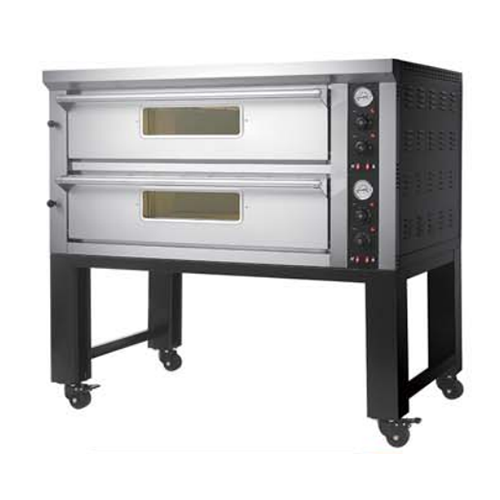
Commercial Convection Oven: Known for their efficiency, convection ovens circulate hot air for faster and more uniform baking, making them ideal for high-volume production. Perfect for bakeries, patisseries, and establishments with a focus on bread, pastries, and roasted items.

Combination Oven: A versatile choice, combination ovens are hybrids of convection ovens and steamers that can offer the flexibility to execute a wide range of recipes with excellence. Whether you're looking to roast, steam, smoke, fry, bake, or grill, combination ovens can cover your needs.
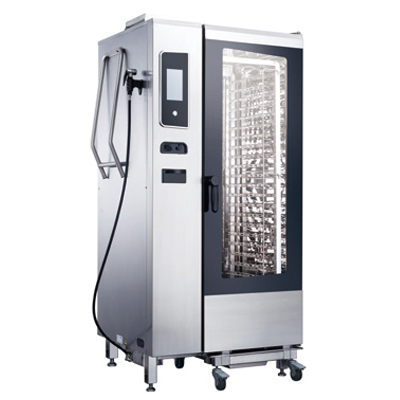
Deck Oven: This oven type is recognized for its capacity to bake multiple trays of food at once, making it a preferred choice for high-volume production environments. Deck ovens are designed to maintain consistent heat across all levels, ensuring that each tray receives uniform cooking temperatures. This feature is particularly beneficial for establishments preparing a variety of baked goods, from bread and pastries to casseroles and roasted meats.
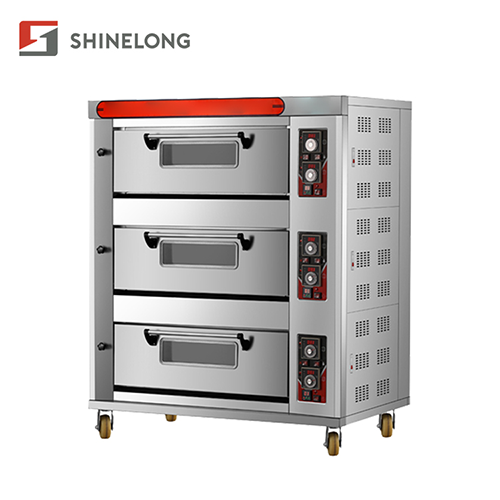
Pizza Oven: Crafted for high-temperature cooking, pizza ovens are not just for pizzas. They're also ideal for creating crispy crusts and perfectly melted cheeses, but their high heat also makes them suitable for a variety of other dishes, from desserts to meats.
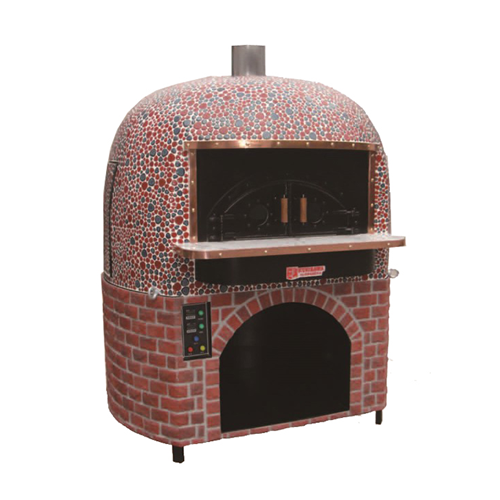
② Refrigeration Equipment & Ice Maker
Refrigeration is a cornerstone of commercial kitchen operations, with commercial refrigerators being the primary safeguard for food safety and ingredient preservation. When outfitting your kitchen, consider undercounter refrigerators for convenient storage and freezers for bulk food preservation. Walk-in coolers provide extensive refrigeration space, ideal for high-volume establishments. The selection of a commercial refrigerator hinges on capacity and accessibility needs, with undercounter refrigerators offering easy access to frequently used items. Investing in top-tier commercial refrigeration equipment, including undercounter refrigerators and freezers, is paramount for maintaining food quality, adhering to health standards, and enhancing kitchen productivity.
During holidays, the role of an ice machine in a restaurant is amplified, as the demand for chilled drinks and ice in food presentation peaks. A reliable ice machine ensures a continuous supply, enabling staff to serve guests promptly without interruptions. It's crucial for maintaining beverage quality and enhancing customer satisfaction, especially during the heightened activity of the festive season. Efficient ice production and minimal downtime are key to supporting a restaurant's operations and guest experience.
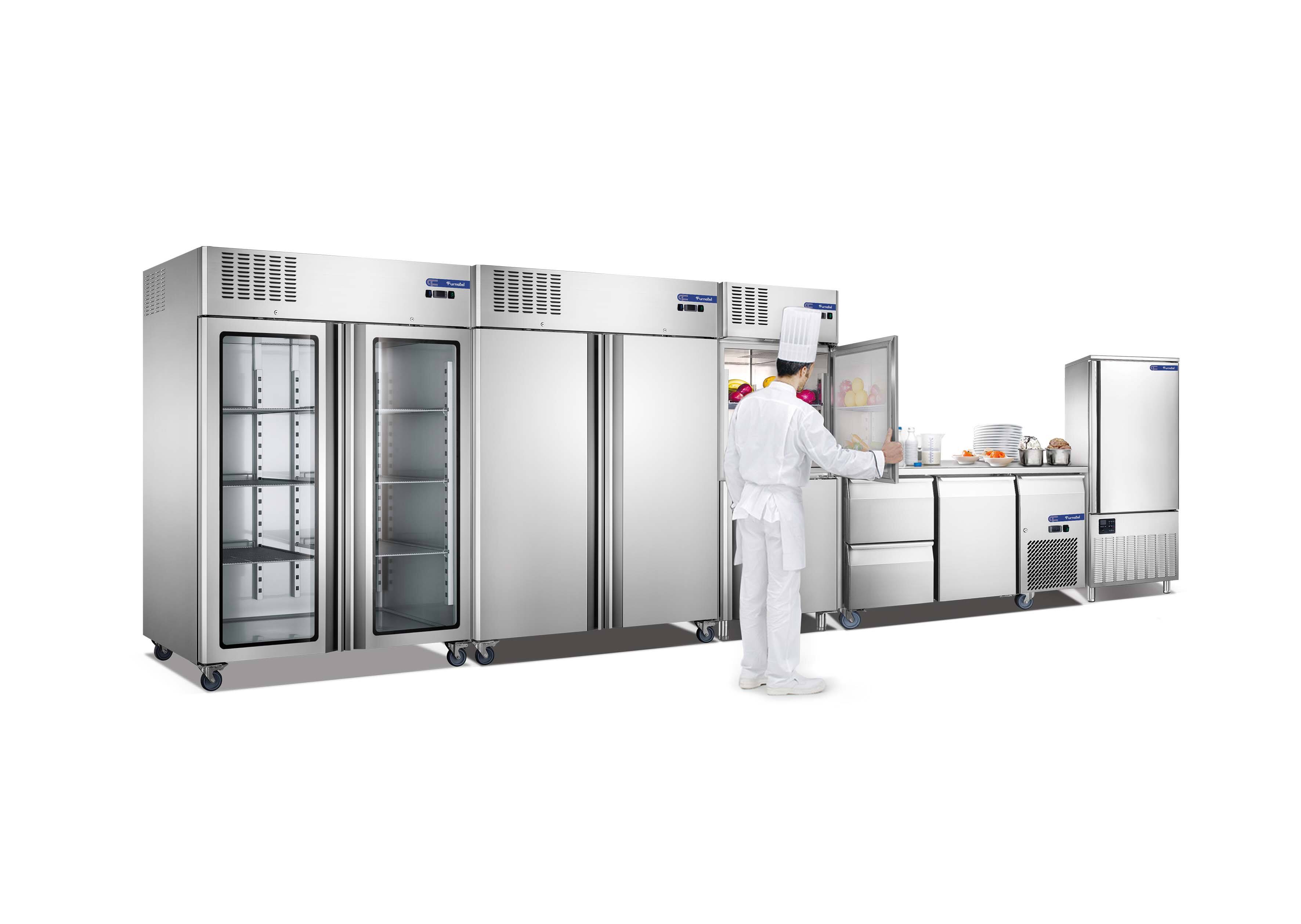
③ Food Processors
Food processors are vital kitchen appliances that offer a range of functionalities, from chopping and slicing to shredding, grinding, and pureeing, making them indispensable in commercial settings. A good food processor can significantly enhance efficiency and ensure consistency in food preparation. Among the various types, batch bowl processors are ideal for large-scale uniform tasks, while continuous feed models are suited for high-volume, on-the-go processing. For dual functionality and space-saving, food processor and blender combinations are a wise choice. Additionally, specialty food processors designed for specific tasks like meat grinding or dough kneading are essential for restaurants with niche menus. Incorporating these versatile tools into your kitchen can greatly improve productivity and maintain the high quality of your dishes.
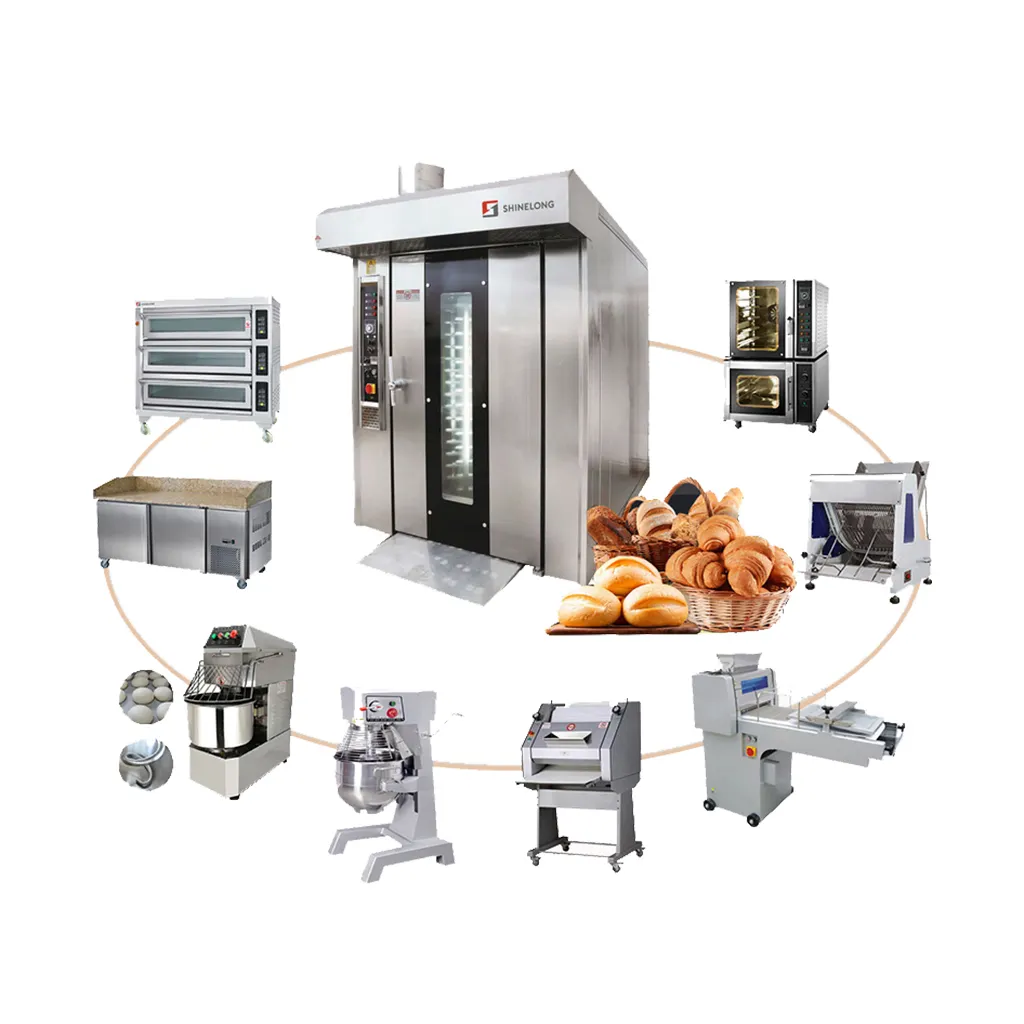
④ Mixers
Mixers are an integral part of any commercial kitchen that specializes in bread, pastries, or other dough-based products. A commercial kitchen mixer is designed to handle heavy and repetitive tasks, ensuring that ingredients are thoroughly combined and that dough is mixed to the perfect consistency. When selecting a mixer for your establishment, consider the volume of food production and the frequency of use, as this will determine the size and power of the mixer needed.
Dough mixers are specifically engineered for working with flour-based mixtures. They are equipped to handle the rigors of kneading, which is crucial for developing the gluten structure in bread and other baked goods. These mixers come in various sizes and capacities, allowing chefs to choose the model that best fits their production scale. For larger-scale operations, a high-capacity dough mixer can be a game-changer, streamlining the bread-making process and reducing the physical labor involved in manual kneading. These mixers are not only powerful but also designed to withstand the demands of continuous use in busy commercial kitchens.

⑤ Cooking Equipment
Cooking equipment is the backbone of any commercial kitchen, with the cooking range often serving as the centerpiece. When considering kitchen appliances for your restaurant, the choice between gas and electric ranges is a significant decision that will impact both performance and operational costs.
Cooking ranges, whether gas or electric, are essential for a variety of cooking tasks, from searing and boiling to simmering and baking. Gas ranges are favored for their precise temperature control, offering immediate heat response, which is particularly beneficial for chefs who require quick adjustments to cooking temperatures. This feature also ensures that gas ranges can continue to function during power outages, providing a level of reliability that electric ranges cannot match. However, gas ranges do present challenges in terms of cleaning and come with inherent safety risks, including the potential for fires or gas leaks.
On the other hand, electric ranges are praised for their energy efficiency and ease of cleaning. They offer a more controlled and even heat distribution, which can be advantageous for cooking methods that require steady, low temperatures. Electric ranges also reduce the risk of fire or gas leaks, contributing to a safer kitchen environment. Despite these benefits, electric ranges may lead to higher electricity bills, which is a consideration for cost-conscious restaurant owners.
Beyond cooking ranges, other commercial restaurant equipment such as deep fryers plays a crucial role in many kitchen operations. Deep fryers are used to prepare a variety of menu items, from fried chicken and fries to seafood and appetizers. They are particularly important for quick-service restaurants and those with a focus on fried foods, offering a fast and efficient method of cooking.
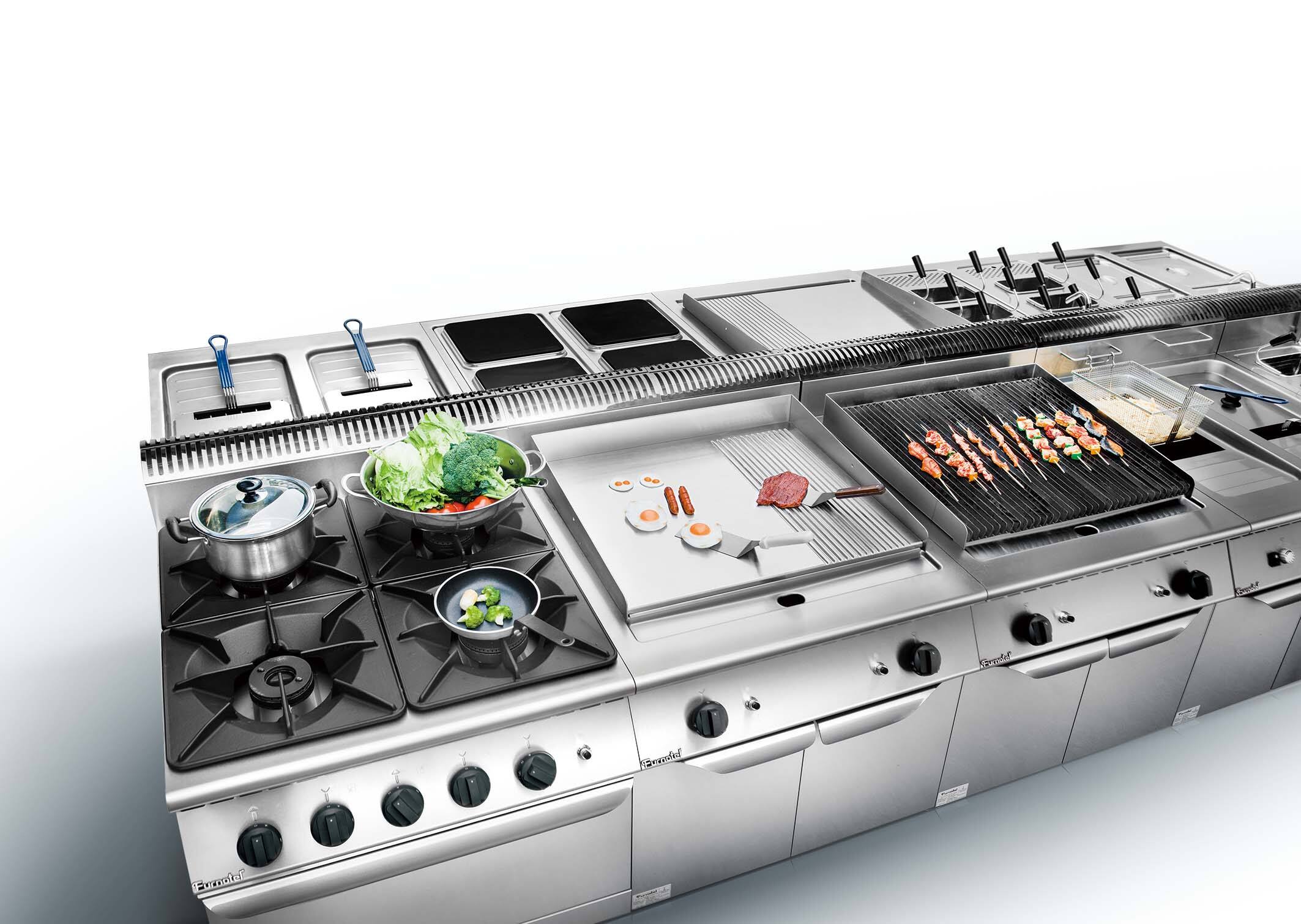
⑥ Stainless Steel Fabrication
Stainless steel fabrication is an essential aspect of commercial kitchen preparation, particularly during the high-demand holiday season. Key components such as stainless steel worktables, stainless steel shelves, stainless steel storage, and stainless steel hood systems are vital to a kitchen's functionality and durability. These elements not only enhance the kitchen's ability to handle increased workloads but also contribute to a cleaner and more hygienic environment, which is crucial for food safety and staff efficiency. Stainless steel's resistance to corrosion and ease of cleaning make it the material of choice for work surfaces and storage solutions that will face the test of time and heavy use during the Christmas rush.
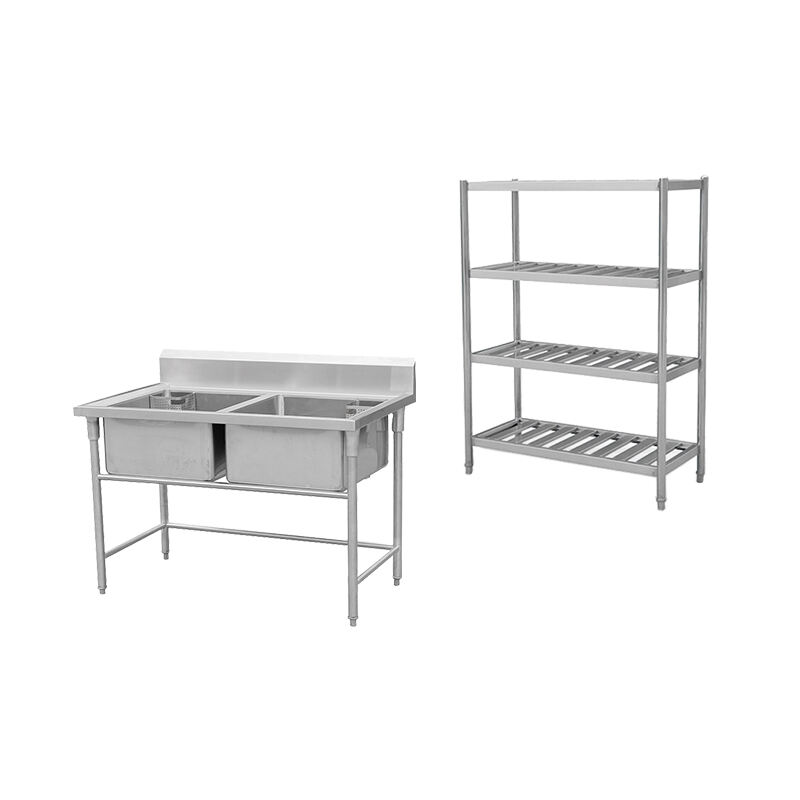
⑦ Dishwasher
The role of a dishwasher in a commercial kitchen cannot be overstated, especially during peak seasons like Christmas. A high-capacity, reliable dishwasher ensures that dishes, utensils, and cookware are consistently clean and ready for use. This equipment is indispensable for maintaining hygiene standards and operational flow, allowing your kitchen to serve guests promptly without the risk of running out of clean tableware.
⑧ Microwave
While it may be easy to overlook the humble microwave among the array of essential restaurant equipment, its utility during the holiday season is undeniable. A commercial microwave oven is more than just a tool for quick reheating; it's an asset for steam cooking, defrosting ingredients rapidly, and maintaining food quality. When every minute counts during the Christmas rush, a microwave can streamline processes, ensuring pre-cooked items are served hot and ready, and ingredients are prepared just in time for service. Invest in a microwave that can keep pace with your kitchen's needs, and you'll find it to be an indispensable part of your holiday kitchen arsenal.
Maintenance and Safety Processes
To navigate the demanding holiday season smoothly, rigorous maintenance and safety processes are a must for any commercial kitchen. Because if you want to run a successful restaurant, cleaning equipment is definitely a key factor that cannot be ignored! You can follow these steps to ensure your kitchen is hygienically safe!
Scheduling planned maintenance for all equipment, with special attention to critical appliances like cooking ranges and refrigeration units, is essential to prevent unexpected failures and extend equipment life.
Testing the reliability of cooking and refrigeration equipment ensures consistent temperature control, which is vital for food quality and safety.
As the season's demands increase, so should the frequency and rigor of cleaning and maintenance routines, with a focus on often-overlooked areas like grease traps and exhaust fans to prevent fire hazards and maintain a hygienic environment.
Stockpiling spare parts and supplies is a preemptive measure against equipment breakdowns, ensuring swift repairs and minimal service disruption.
Additionally, reviewing health and safety protocols in anticipation of the increased number of Christmas services is crucial for protecting both customers and the restaurant's reputation.
Lastly, assessing the ventilation system's effectiveness is key to providing a safe and comfortable working environment, reducing the risk of fire hazards and enhancing kitchen efficiency.
Staff Training and Emergency Plans
During the bustling holiday season, effective staff training and emergency planning are indispensable for managing the heightened pressures in your commercial kitchen. Training your staff on the correct and safe operation of all kitchen equipment is crucial; this empowers them with the ability to perform basic troubleshooting, addressing minor issues promptly to minimize service disruptions and maintain a seamless dining experience for your guests.
Christmas Decorations for the Restaurant
During the holiday season, enhancing your restaurant with Christmas decorations is a strategic move to boost the dining experience and draw in more customers. Thoughtful and festive decorations not only create a warm, inviting arua but also set the stage for a memorable dining experience that resonates with guests, fostering repeat business and positive word-of-mouth. By integrating these decorative touches with robust maintenance and safety processes, as well as thorough staff training, your establishment is well-positioned to excel during the busy holiday season. This comprehensive approach ensures exceptional service and upholds your restaurant's reputation for quality and reliability, making the holiday rush not only manageable but also a period of success and celebration.

FAQs
1. What is the most popular food at Christmas?
Classic Christmas Foods Rank: Roast potatoes (76%), Mashed potatoes (75%), Turkey (73%), Bread or rolls (70%), Stuffing or dressing (70%)
2. How to make a kitchen Christmas?
It's a good idea to try hanging festive green wreaths on open shelves or small wreaths on tight kitchen cabinet doors.
3. Which chemical is used for cleaning a kitchen?
Detergents. Detergents are the most common type of cleaner and are often used in domestic and commercial kitchens.
4. What temperature should a commercial kitchen be?
The recommended operating temperature is between 68 and 78 degrees.
5. What Are The Four Major Systems in a Commercial Kitchen?
Food Preparation System, Cooking System., Refrigeration System, Service System.
 After-Sales:
After-Sales:
 EN
EN
 AR
AR
 HR
HR
 NL
NL
 FI
FI
 FR
FR
 DE
DE
 EL
EL
 HI
HI
 IT
IT
 PT
PT
 RO
RO
 RU
RU
 ES
ES
 TL
TL
 ID
ID
 SL
SL
 VI
VI
 ET
ET
 MT
MT
 TH
TH
 FA
FA
 AF
AF
 MS
MS
 IS
IS
 MK
MK
 HY
HY
 AZ
AZ
 KA
KA
 UR
UR
 BN
BN
 BS
BS
 KM
KM
 LO
LO
 LA
LA
 MN
MN
 NE
NE
 MY
MY
 UZ
UZ
 KU
KU









